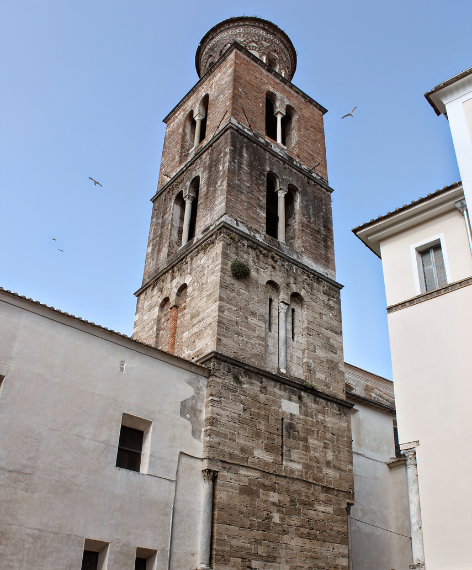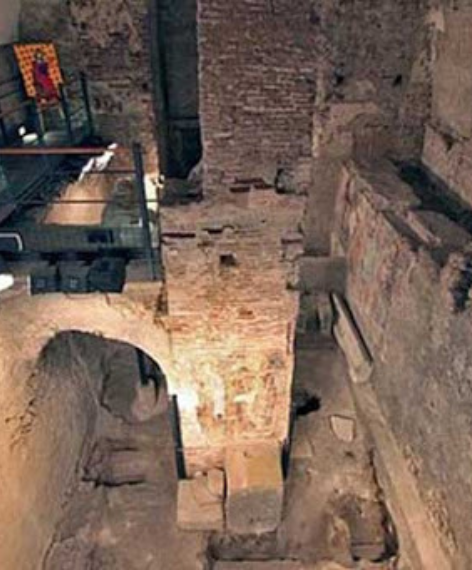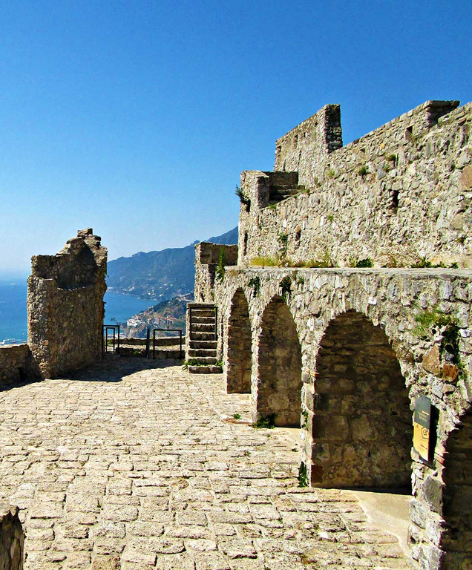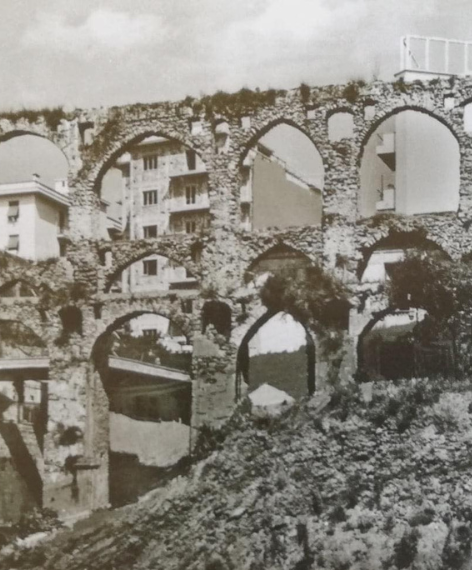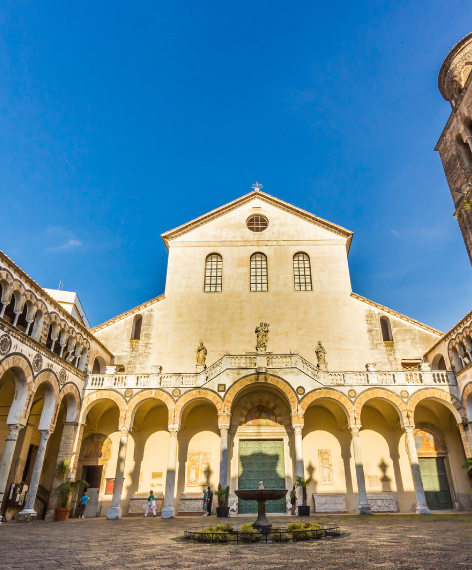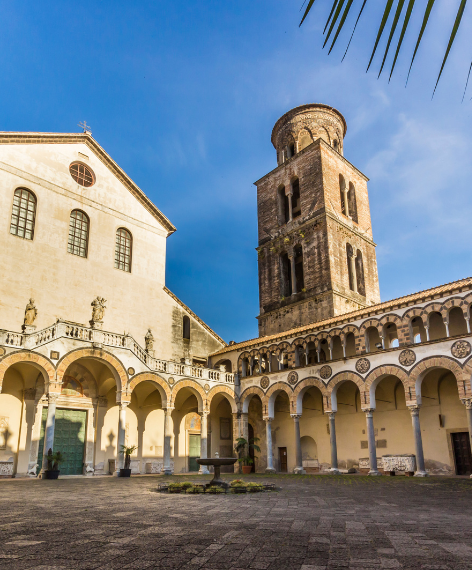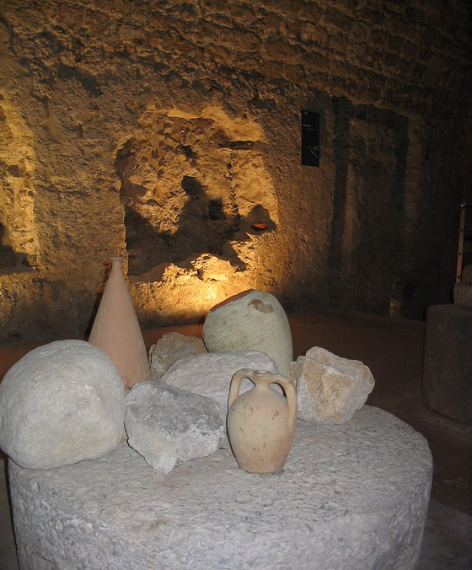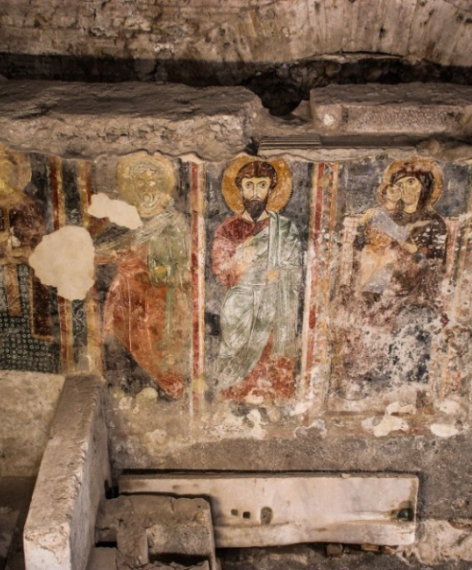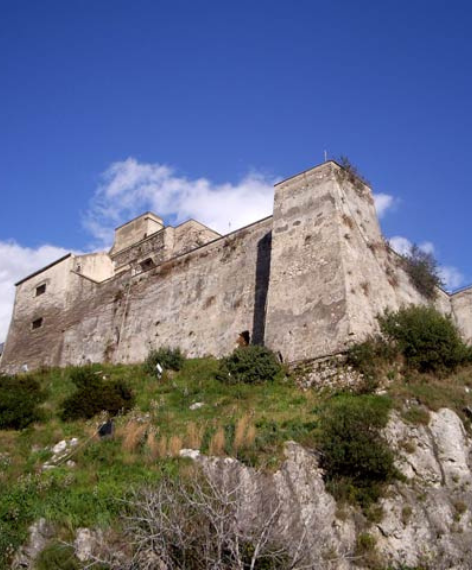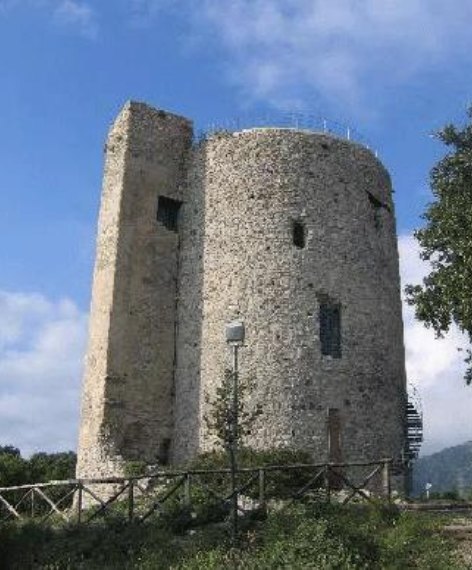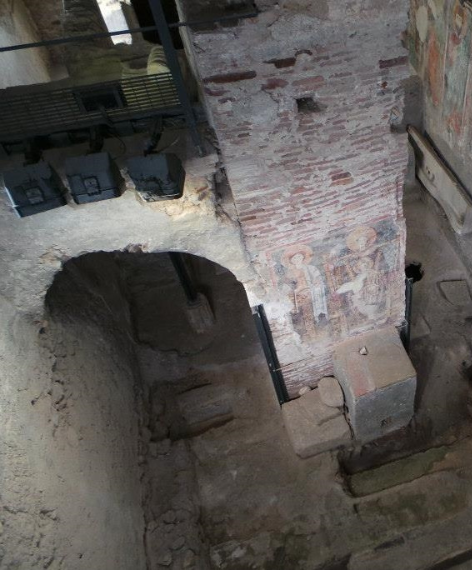Between 639 and 640 AD. the Longobards of Arechi I of the Duchy of Benevento decided to wrest the city of Salerno from Byzantine rule without major bloodshed. In 646 Salerno became part of the Duchy of Benevento.
After the defeat of the Longobards in Pavia in 774 Arechi II decided to create a new fortified capital able to resist the advance of Charlemagne and promote good relations with Byzantium and Rome.
The city stood in an easily defensible place: the north was protected by the mountains and the castle that dominated the hill, while the plain of the Sele was a place to house the refugees who escaped the conquest of Lombardy Major.
In the spring of 787 Arechi II moved with his family and his court to Salerno, whose walls he had fortified. In April of the same year Arechi II received the Frankish ambassadors in the palace he had built and stipulated an honorable peace undertaking to pay a annual tribute of 7000 coins and offering the youngest son Grimoaldo hostage, together with twelve other Benevento nobles.
The refoundation of Salerno falls within those few cases of cities of little institutional importance which, during the Lombard age, became centers of civil or ecclesiastical territorial organization. The city continued to be a princely seat even after the death of Arechis II on 26 August 787, with his son Grimoaldo III until then held hostage in Aachen.
Medieval Era
Salerno and the context in the Middle Ages
Historical Steps

Grimoaldo's pact
About 787 A.D.Grimoaldo III obtained from Charles the authorization to re-enter the principality and assume its crown on the condition to swear allegiance to the Franks. At the beginning, he kept his promise so much as to ally with the Franks against Prince Adelchi, son of Desiderius, who returned to Italy with Byzantine support to regain his lost throne.
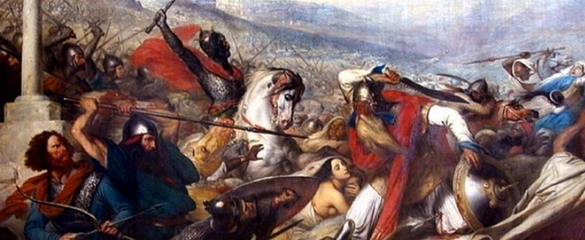
The outbreak of war with the Franks
About 800-803 A.D.Subsequently Grimoaldo got closer to the Byzantines causing the war against the Franks between 800 and 803. With the death of Grimoaldo III in 806, the Arechian dynasty died out and, having left no heirs, the kingdom passed to Grimoaldo IV (806-817) stolesaiz, who held the position of head of the guards in the princely palace.
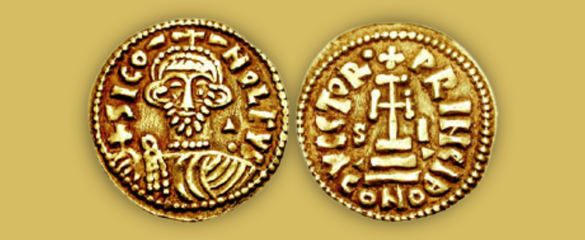
The birth of the autonomous principality
About 839 A.D.The 9th century witnessed the division of the city from Benevento and the birth of the autonomous principality. In the economic field with the establishment of a colony of Amalfitans in the city to exploit its maritime traffic. The first decades of the century were characterized by a continuous struggle for the conquest of power between various members of the Benevento aristocracy. Grimoaldo IV stolesaiz was assassinated by members of the princely court.

The “new walled city”
About 871-872 A.D.The new prince Guaiferio faced the Arab incursions and expanded the city by building new walls at the foot of Mount Bonadies, the Plaium montis in which he had his palace built and the palatine chapel of San Massimo of which part of the colonnade still endures in it. It was a period of great economic development which saw new rural communities as protagonists who could acquire greater productive and economic autonomy. Guaiferio embraced a policy of approaching Byzantium trying to escape the internal struggles that saw the various Lombard groups in dispute.

